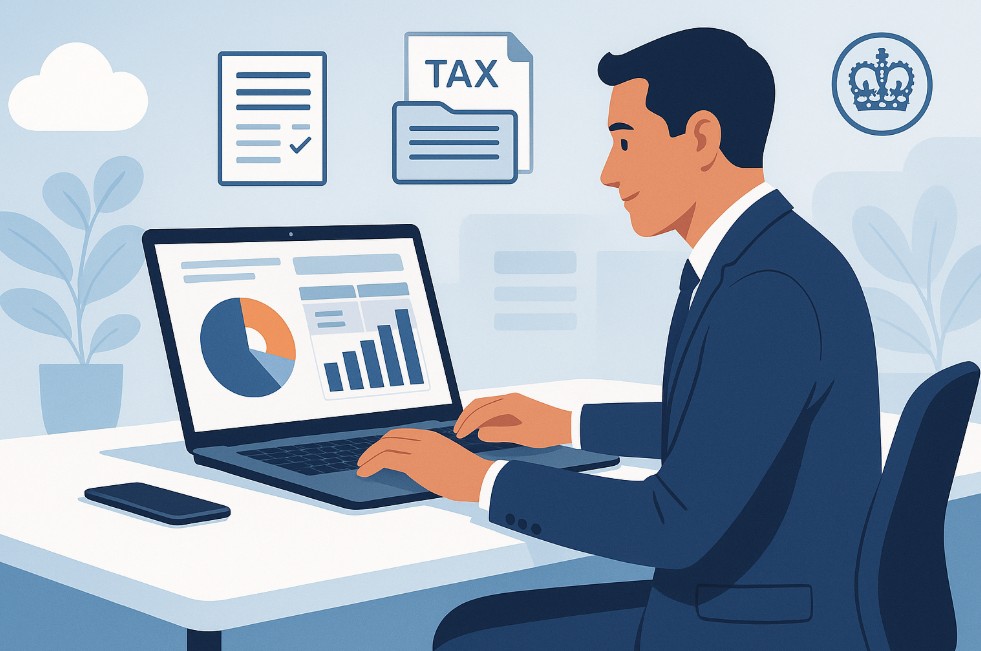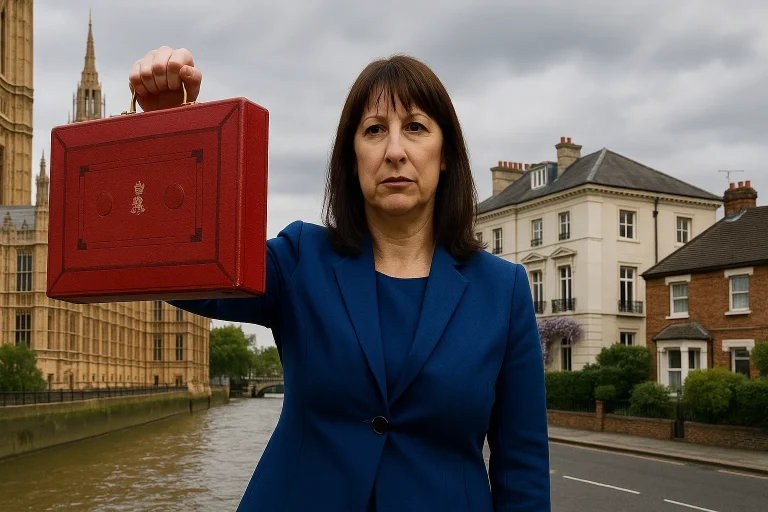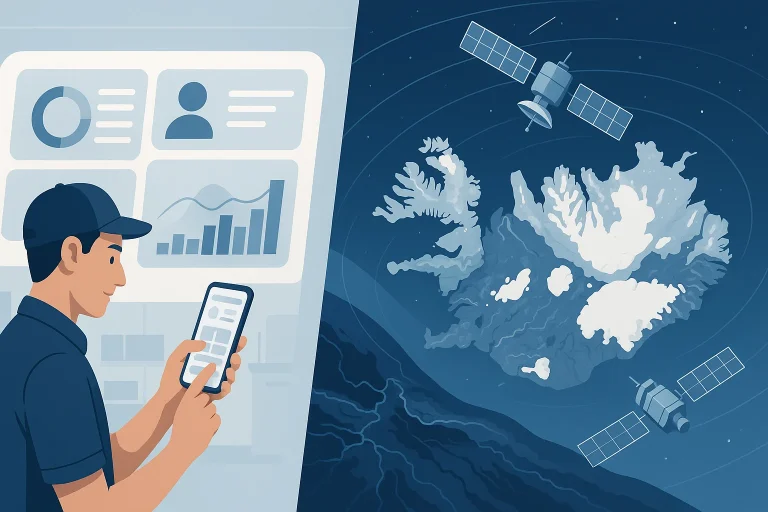Have you ever found yourself buried in paperwork, unsure whether your tax records are complete or accurate? Are you a business owner juggling spreadsheets while trying to meet HMRC deadlines? If so, you’re not alone and it’s exactly this challenge that the UK government is aiming to solve with Making Tax Digital (MTD).
In an era where digital technology touches nearly every aspect of our personal and professional lives, the tax system is no exception. Launched by HM Revenue and Customs (HMRC), Making Tax Digital is a bold step toward overhauling how taxes are recorded, submitted, and managed across the UK.
But what exactly is Making Tax Digital, why has it been introduced, and how will it impact the way you manage your tax obligations? In this article, we explore the goals, scope, and implications of MTD, particularly for businesses, sole traders, and landlords preparing to transition to a fully digital tax environment.
What Is Making Tax Digital and Why Has It Been Introduced?
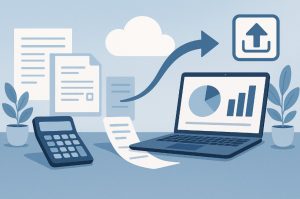
Making Tax Digital (MTD) is the UK government’s initiative to modernise the tax system by moving away from paper-based and manual processes.
Under this initiative, taxpayers whether they are businesses, landlords, or self-employed individuals are required to maintain digital records and submit their tax data to HMRC using compatible software.
This initiative is not just about embracing technology for the sake of convenience. The primary objective behind Making Tax Digital is to reduce the tax gap, which represents the difference between the tax that should be collected and what is actually received by HMRC.
According to government estimates, avoidable mistakes in tax filings cost the Exchequer over £9 billion annually. By digitising the process, HMRC aims to significantly cut down on these errors.
At its core, MTD is designed to:
- Ensure greater accuracy in tax reporting
- Provide HMRC with real-time data through quarterly submissions
- Help taxpayers manage their obligations more efficiently
- Reduce the need for time-consuming manual entries and end-of-year reconciliations
The long-term vision is to create a tax system that is easier to navigate, harder to get wrong, and more closely aligned with how businesses already use technology to manage their finances. MTD represents a fundamental change in the UK’s tax infrastructure one that aims to bring it into the 21st century.
While the concept may initially appear daunting, especially for small business owners unfamiliar with digital tools, the transition to MTD is intended to provide long-term benefits in accuracy, compliance, and overall financial control. It is a strategic response to the evolving nature of business and personal finance, where digital technology plays a central role.
How Does the Making Tax Digital System Work in Practice?
Making Tax Digital fundamentally changes how tax information is maintained and reported. Traditionally, taxpayers submitted their annual tax returns manually or via HMRC’s online portal. However, MTD moves this process to a digital-first model.
Under the scheme, eligible individuals and businesses must maintain digital records of all relevant tax data and use approved software to:
- Record income and expenses digitally
- Submit quarterly updates to HMRC rather than waiting until the end of the financial year
- Complete a final end-of-period statement (EOPS) that calculates the actual tax due
Each submission helps build a clearer, more up-to-date picture of a taxpayer’s financial status, aligning the system more closely with real-time income rather than retrospective calculations. The result is a proactive, rather than reactive, approach to tax compliance.
Who Needs to Comply with Making Tax Digital Now and in the Future?
MTD is being rolled out in phases, starting with VAT and extending over the next few years to cover income tax and eventually corporation tax. Here’s how it currently stands:
Current and Future MTD Rollout Schedule
| Start Date | Affected Group |
| April 2019 | VAT-registered businesses with turnover above £85,000 (now £90,000) |
| April 2022 | All VAT-registered businesses, regardless of turnover |
| April 2026 | Self-employed individuals and landlords earning over £50,000 |
| April 2027 | Self-employed individuals and landlords earning £30,000–£50,000 |
| April 2028 | Proposed expansion to those earning over £20,000 |
The initial phase focused on VAT, as it presented a straightforward structure for digital integration. From 2026 onwards, income tax self-assessments will transition to MTD, significantly changing how sole traders and landlords report earnings.
What Changes Are Required for VAT Submissions?
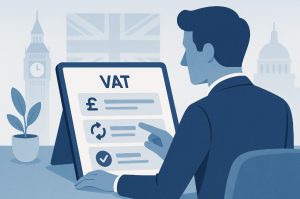
Since April 2022, all VAT-registered businesses must maintain their VAT records digitally and use MTD-compatible software to file VAT returns. This applies to businesses of all sizes and legal structures, including sole traders, partnerships, and limited companies.
Key VAT-related obligations include:
- Keeping digital records of all VAT-related transactions
- Submitting VAT returns every quarter through approved software
- Replacing manual processes with automated reporting tools where possible
This shift not only streamlines submissions but also provides businesses with more immediate insight into their financial position, which in turn allows better forecasting and planning.
What Does Making Tax Digital Mean for Income Tax?
The second major phase of MTD focuses on Income Tax Self Assessment (ITSA), often referred to as MTD for Income Tax. This phase targets sole traders and landlords who currently complete an annual self-assessment tax return.
Under MTD, this group will be required to:
- Submit quarterly updates of income and expenses to HMRC
- File a final declaration at the end of the tax year
- Use software that integrates directly with HMRC’s digital systems
These quarterly submissions act as progress reports, not final tax bills. HMRC uses them to estimate tax liabilities throughout the year, reducing the likelihood of large, unexpected tax payments.
What Digital Records Must Be Kept Under MTD?

The type of records businesses must retain under MTD are the same as before but now they must be stored and managed digitally. This includes:
- Business name, contact details, and VAT registration number
- Invoices and receipts, including VAT amounts charged and paid
- The time of supply for transactions (tax point)
- Any VAT accounting scheme used (e.g., Flat Rate Scheme)
- Adjustments, corrections, and reverse charges
- Import/export documentation where relevant
Businesses must also store data relating to debit and credit notes, VAT-exempt transactions, and non-VATable expenses.
Digital records can be created using software, scanned receipts, or photographed documents stored on secure devices. It’s essential to keep these records for at least six years, as required by HMRC.
What Is MTD-Compatible Software and How Do You Choose It?
To comply with MTD, your accounting software must:
- Connect directly to HMRC’s systems via an approved API
- Allow for submission of VAT or income tax updates
- Maintain secure and accurate digital records
Popular software options that meet these requirements include Xero, Sage Business Cloud, QuickBooks, and FreeAgent. If you’re already using one of these platforms, it’s a matter of ensuring that the version you have is authorised for MTD.
If you’re starting from scratch, you’ll need to acquire software that suits the scale and needs of your business. Most providers offer cloud-based solutions with monthly fees ranging from £10–£30 depending on features.
How Do You Register for Making Tax Digital with HMRC?
Registering for MTD is a relatively simple process, especially if your business is already VAT-registered. In most cases:
- New VAT-registered businesses are automatically signed up
- Existing businesses must confirm MTD compliance with their software provider
If you’re registering manually for MTD for VAT or Income Tax, you’ll need:
- Government Gateway ID and password
- VAT number or Unique Taxpayer Reference (UTR)
- National Insurance number (if self-employed)
- Company registration number (for limited companies)
Once registered, HMRC will send a confirmation email. You must not submit returns until this confirmation is received.
Are Any Businesses Exempt from Making Tax Digital Requirements?

Although MTD is becoming a universal requirement, exemptions exist. HMRC may exempt you if:
- You have a disability, age-related barrier, or live in a remote area with no reliable internet access
- You are insolvent or in the process of being liquidated
- Your religious beliefs prohibit the use of digital tools
To apply for an exemption, contact HMRC directly and be prepared to provide supporting evidence.
How Will the MTD Process Change the Way Tax Is Calculated and Paid?
The most significant change under MTD is the move to quarterly submissions, giving HMRC and the taxpayer a rolling overview of financial performance and obligations.
However, the traditional 31 January tax deadline remains in place. After submitting the final annual update, HMRC calculates your actual tax bill, and payment is due by:
- 31 January – First Payment on Account and any balancing payment
- 31 July – Second Payment on Account (if applicable)
You must also retain supporting evidence like receipts and invoices because HMRC can request them during compliance checks.
What Are the Penalties for Non-Compliance with MTD?
From January 2023, HMRC introduced a points-based penalty system to discourage late submissions and encourage better compliance.
Penalty Structure
| Infraction Frequency | Points Threshold | Penalty |
| Quarterly | 4 points | £200 per infraction |
| Monthly | 5 points | £200 per infraction |
| Annually | 2 points | £200 per infraction |
If you’re required to comply with both VAT and income tax under MTD, penalties accrue separately. That means you could face multiple £200 penalties if you miss deadlines across both tax types.
You will not be penalised if you’re officially exempt.
What Are the Benefits and Drawbacks of Making Tax Digital?
MTD brings several clear advantages but also presents a few challenges:
Benefits
- Improved accuracy through automated calculations and record-keeping
- Real-time tax insights, aiding better financial decision-making
- Fewer surprises at year-end with quarterly updates
- Easier record access and organisation with cloud-based storage
Drawbacks
- Ongoing subscription costs for software
- Dependence on reliable internet connectivity
- Learning curve for those unfamiliar with accounting platforms
Despite the initial effort to transition, most businesses find that MTD ultimately saves time, increases clarity, and reduces the administrative burden of tax filing.
Conclusion: Is Making Tax Digital the Future of UK Taxation?
Making Tax Digital is no longer a future possibility it’s an active and evolving framework that will soon be the default method for managing UK tax compliance. From VAT to Income Tax, HMRC is steadily replacing paper-based returns with real-time, software-driven submissions.
For businesses and individuals alike, adapting early to MTD offers multiple advantages, including fewer mistakes, better visibility, and smoother financial planning. The sooner you transition, the better prepared you’ll be for future developments, including the eventual introduction of MTD for Corporation Tax.
Now is the time to audit your systems, review your processes, and ensure you’re ready for a fully digital tax environment.
Frequently Asked Questions About Making Tax Digital
Will I still need to submit a final tax return under MTD?
Yes. The quarterly updates are summaries, not final tax declarations. You’ll still need to submit a final return or End of Period Statement each year.
Can I use spreadsheets for MTD?
Only if they are connected to bridging software that can submit data directly to HMRC. Standalone spreadsheets are not compliant.
How long should I keep digital tax records?
You must retain digital tax records for at least six years in case HMRC audits your tax submissions.
What if my software stops working before a submission?
You may be able to claim reasonable excuse relief, but you should fix the issue and notify HMRC as soon as possible.
Are charities required to follow MTD rules?
Charities are generally subject to MTD for VAT if they are VAT-registered, but some may qualify for exemptions.
Is FreeAgent suitable for MTD for Income Tax?
Yes. FreeAgent is one of HMRC’s approved software providers for both VAT and Income Tax under MTD.
Do I need to register separately for MTD for VAT and Income Tax?
Yes, these are separate tax types, so you must register individually for each if both apply to your business.

